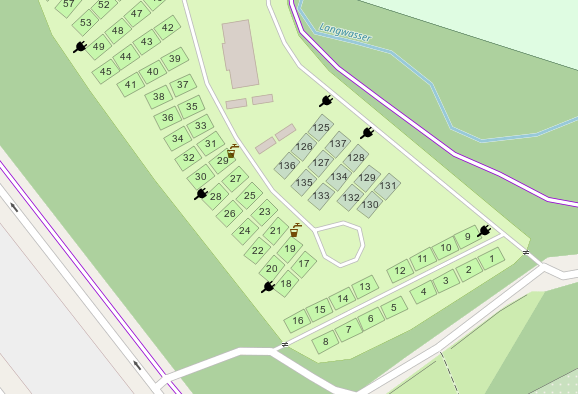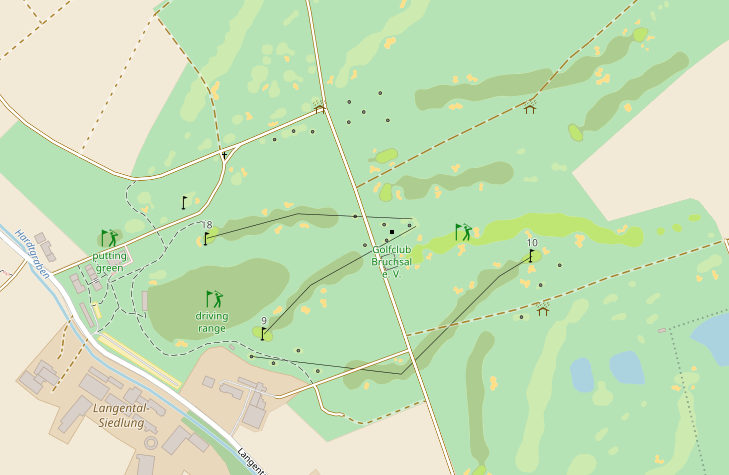Angesichts, der von Greta Thunberg angestoßenen #FridaysForFuture Bewegung bekommen auch Diskussionen über die Energiewende endlich wieder den Stellenwert, den sie angesichts der Lage, in der sich die Welt befindet auch haben sollten.
Insbesondere auf Twitter kommt dann aber immer schnell die Diskussion auf man möge doch auch Kernkraft als Teil der Lösung in Richtung nachhaltigere, decarbonisierte Gesellschaften begreifen.
Ein komplexes Thema, das man sicher nicht in einem Tweet beantworten kann. Ich halte den weiteren Ausbau von Kernenergie, bzw. im Falle Deutschlands den Wiedereinstieg in deren Nutzung, für einen Irrweg und möchte hier kurz in einer Form, wie es auf Twitter nicht möglich wäre erklären warum ich das so sehe.
Nehmen wir hierzu der Einfachheit halber mal an, dass es sowohl die Probleme mit der Endlagerung radioaktiven Mülls als auch die bei heutiger Reaktorsicherheit und heutigem Ausbau etwa alle 25 Jahre stattfindenden größeren Unfälle[1] nicht gäbe.
Des weiteren möchte ich kurz für diejenigen, die den Begriff nicht kennen erklären was Grundlast bedeutet und wie diese in einem konventionellen System der Erzeugung elektrischer Energie genutzt wurde.
Zunächst zur sogenannten Grundlast.
Aufgrund der Tatsache, dass der Bedarf elektrischer Energie tages- und jahreszeitlicher Schwankungen unterliegt und elektrische Energie bisher nicht in großen Mengen speicherbar ist unterteilt man diesen Bedarf in einem klassischen, zentralistischen Energiesystem in die sogenannte Grundlast, die immer benötigt wird und in die sogenannte Spitzenlast, die nur zu bestimmten Tageszeiten benötigt wird.
Früher gab es beispielsweise in Deutschland immer zur Mittagszeit einen erhöhten Bedarf an elektrischer Energie, weil hierzulande viele elektrische Herde und Backöfen verwendet werden. Heute ist das Dank der vielen bereits installierten Photovoltaikanlagen jedoch kaum noch der Fall.
Klassisch wurden Spitzenlasten durch flexibel zuschaltbare Pumpspeicherkraftwerke und Gaskraftwerke ausgeglichen. Die Grundlast lieferten Kohlekraftwerke, Kernkraftwerke und Laufwasserkraftwerke an Flüssen.
Zur Decarbonisierung dieses Systems könnte man nun natürlich ganz klassisch planwirtschaftlich weitere Atomanlagen bauen und versuchen die Gaskraftwerke vollständig durch Pumpspeicherkraftwerke zu ersetzen. Ziel erreicht. Bleibt lediglich kurz anzumerken, dass man für ein solches System nahezu zwangsläufig in die ebenfalls umstrittene Plutoniumwirtschaft einsteigen müsste, denn auch Kernbrennstoffe sind eine endliche Resource.
Während man den Kfz-Verkehr in einem solchen System durch Umstellung auf Elektrofahrzeuge noch halbwegs stemmen könnte gibt es jedoch ein weiteres Problem, dass dieses System nur schlecht lösen kann: Den Bedarf an Wärmeenergie.
Nun zum anderen, vollständig regenerativem Energiesystem, wie es Experten sich für die künftige Energieversorgung in Deutschland vorstellen.
Der bisher noch nicht erwähnte Strom aus Solar- und Windkraftanlagen hat einen prinzipbedingten Nachteil. Während der gefürchteten sogenannten Dunkelflaute, das sind in unseren Breiten windarme Nächte am Jahresbeginn, liefern diese im schlimmsten Fall keine elektrische Energie. Da jedoch auch in diese Zeiten Energie benötigt wird gibt es also nur zwei realistische Szenarios:
Entweder man verzichtet ganz auf diese Energiequellen oder man man sieht Maßnahmen vor diese Energiequellen (temporär) vollständig zu ersetzen.
Vollständig nachhaltig lassen sich erneuerbare Energien durch Generatoren ersetzen, deren Energie (in Zeiten mit viel Wind und Sonneneinstrahlung) aus vorher erzeugten gesammelten Quellen erzeugt wird. Die technisch vielversprechendste Methode für solche Generatoren stellt die Kombination aus Elektrolyse und Gasmotoren dar. Letztere können dezentral betrieben werden, sodass deren Abwärme ebenfalls sinnvollen Zwecken zugeführt werden kann. Logischerweise ergibt sich hier aufgrund physikalischer Eigenschaften ein etwas schlechterer Wirkungsgrad als bei der direkten Nutzung elektrischer Energie, aber auch das oben beschriebene herkömmliche Energiesystem erzeugte jede Menge Abwärme.
Diese Überlegungen führen mich zu meiner Eingangs erwähnten Ablehnung von Kernkraftwerken. Diese sind nämlich prinzipbedingt teuer, zentral und in ihrer Ausgangsleistung schlecht regelbar. Wind und Solarstorm ist hingegen preisgünstig und dezentral.
Deren prinzipbedingten Nachteil, der stark schwankenden Ausgangsleistung muss man zwangsweise mit ebenfalls dezentral aufgestellten Generatoren ausgleichen. Wie das gehen kann habe ich oben beschrieben.
Ein befreundeter Professor aus dem Studiengang Erneuerbare Energien der Hochschule Karlsruhe erklärt mir, dass zur Deckung der Höchstlast in der BRD von 80GW durch Gasmotoren etwa eine Investition von 16 Milliarden Euro notwendig ist[2]. Für den aus seiner und meiner Sicht unnötigen zusätzlichen Netzausbau rechnet man derzeit ca. 80 Milliarden Euro. Zum Vergleich: Das im Bau befindliche Kernkraftwerk Olkiluoto in Finnland wird im besten Fall ca. 9 Milliarden Euro kosten und im Vollastbetrieb ca. 1,6GW an elektrischer Leistung liefern[3].
Damit an dieser Stelle keine Missverständnisse aufkommen: Zum vollständigen Umbau unseres Energiesystems auf dieses System brächte man selbstverständlich nicht nur die Investition in Gasmotoren sondern müsste auch noch die restlichen 50% an elektrischer Energie, die derzeit noch aus Kernenergie und Kohlekraftwerken stammen aus Photovoltaik und Windkraft erzeugen.
Man sollte diese Kraftwerke sogar noch deutlich weiter ausbauen, denn mit dem erzeugten Gas lässt sich dezentral ein Teil der Wärme erzeugen, die immer noch den Großteil des Energiebedarfs hierzulande ausmacht und deren vollständige nachhaltige Erzeugung leider noch immer kein Konzept vollständig löst.
Fazit: Die vollständig nachhaltige Erzeugung aller benötigten elektrischen Energie ist ohne Kernkraftwerke möglich.
Die vollständig nachhaltige Erzeugung aller benötigten Primärenergie ist deutlich schwieriger. In letzterem Fall kann die dezentrale Kombination verschiedener Ansätze helfen. Solche Ansätze reichen von besserer Wärmedämmung an Gebäuden bis zur Nutzung von Erdwärme und Anlagen zur Kraft-Wärme-Kopplung. Die oben erwähnten Gasmotoren können jedoch problemlos Teil einer solchen Infrastruktur zur Erzeugung von Wärme sein.
Ich freue mich über Kommentare und Hinweise auf sachliche Fehler zu diesem Artikel auf Twitter oder auch per Email. Ich selbst war früher ebenfalls kein Kernkraftgegner aber ich sehe wirklich nicht wie uns diese Technologie bei der Aufgabe der Dekarbonisierung unserer Energieerzeugung helfen kann.
[1] Michael Sailer erklärt in Folge 14 des Alternativlos Podcasts, dass hier Theorie und Praxis atomarer Unfälle recht gut zusammen passen.
[2] Laut Aussage eines Ingenieurs von Caterpillar Energy Solutions kostet ein Generatormotor etwa 200 Euro pro Kilowatt elektrisch. Daraus errechnen sich die genannten 16 Milliarden Euro.
[3] Quelle sind die Daten aus der Wikipedia zum derzeit in Bau befindlichen Kraftwerk Olkiluoto




 I took the chance to go for
I took the chance to go for 

Neueste Kommentare